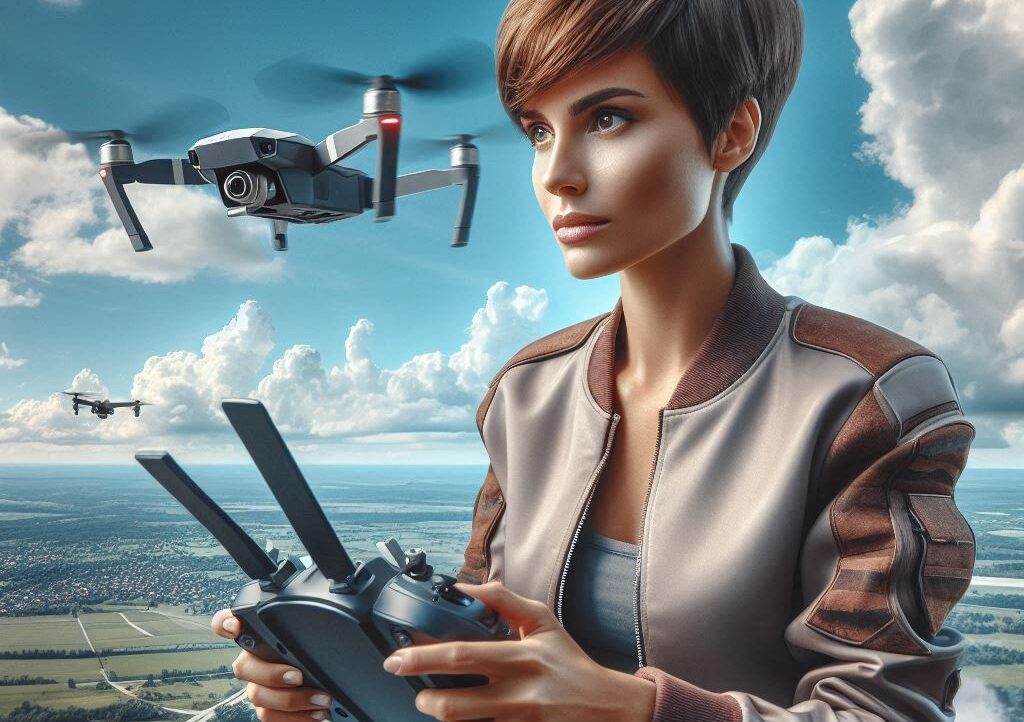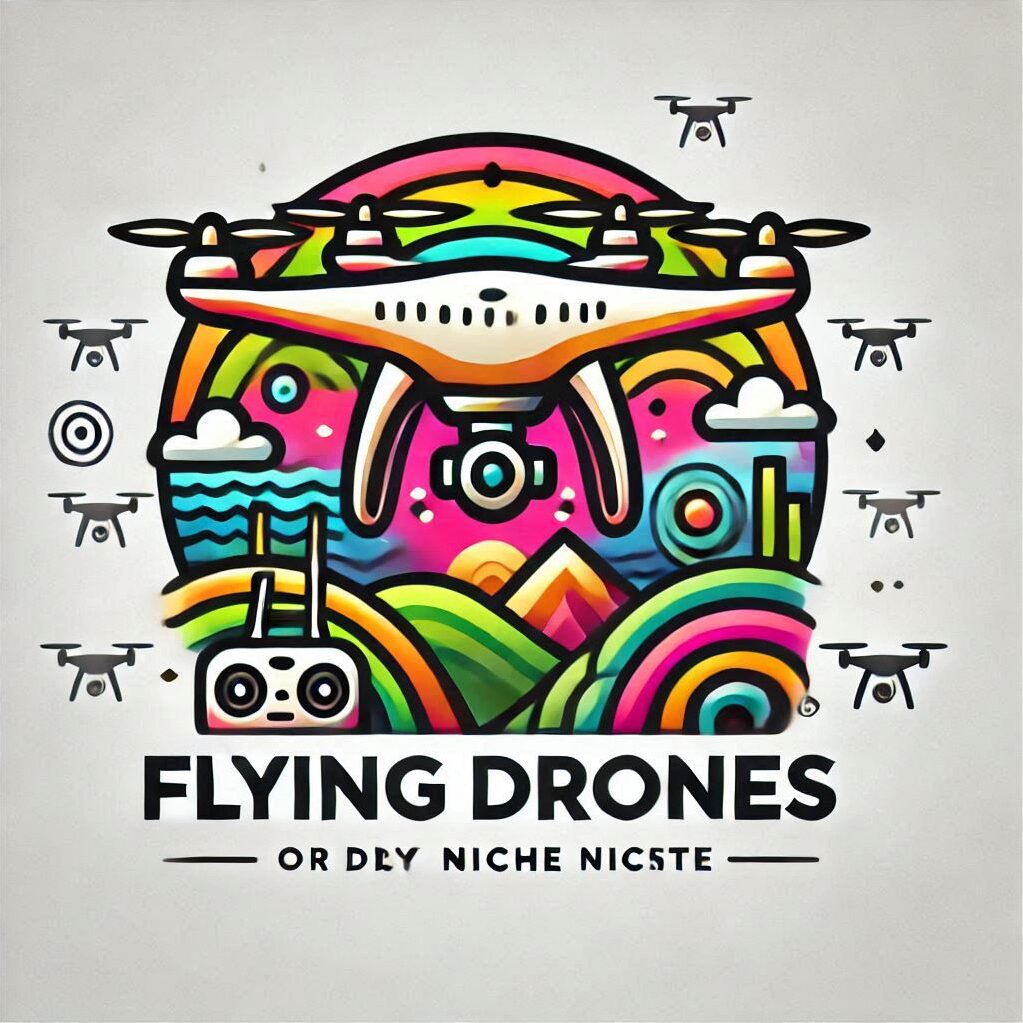
Drone racing has taken the world by storm, capturing the imagination of speed junkies and tech enthusiasts alike. It’s like taking a traditional car race, shrinking it down, and flying at unbelievable speeds through obstacle courses that look straight out of a futuristic video game.
At the heart of this sport are the drones themselves. Unlike your run-of-the-mill photo drones, racing drones are built for one thing—speed. They come stripped down to the essentials, with lightweight frames and high-performance motors.
Drones used in racing are packed with some serious tech. The frames, often made from carbon fiber, are designed to withstand crashes and bumps. You’d also notice the difference in propellers which are specifically chosen for their role in achieving optimal speed and maneuverability.
Each racer wears a pair of FPV goggles. This is where the magic really happens. The goggles stream a live feed, immersing the pilot in the cockpit as if they’re inside the drone. It’s part video game, part high-octane sport, and wholly exhilarating.
In the world of drone racing, having the right gear isn’t just about getting the best speed. It’s about precision, control, and gaining that competitive edge. Understanding what makes up this gear and why it’s used is the first step in mastering the sport.
What Do Drone Racers Use?
Diving into the gear of a drone racer is like opening a treasure chest of tech goodies. From sleek drone frames to tiny motors that pack a punch, the list is extensive. Racers predominantly use custom-built drones or specialized racing models designed right out of the box for high-speed thrills.
Let’s talk tech specs. These drones come equipped with brushless motors, which are powerful, efficient, and integral for the speed you crave on the race track. Most racing drones have four motors—one for each propeller—allowing for agile movements and quick directional changes.
Now onto the heart of the setup: the First-Person View (FPV) system. These tools transport racers straight into the action. A camera mounted on the drone sends real-time video back to the pilot’s headset, letting them navigate tricky courses just like a jet fighter pilot. Talk about a command center on your face!
Transmitter and receiver systems can’t be overlooked either. The transmitter, or controller, is what pilots hold in their hands during a race. It’s got all the switches, dials, and sticks needed for perfect maneuverability. The receiver on the drone ensures it processes the commands quickly and accurately, crucial for milliseconds that mean victory or defeat.
The gear list doesn’t end with drones and controllers. Batteries, antennas, and the all-important video transmitter play key roles in the racer’s kit, ensuring range, clarity of video feed, and longevity in the air.
Understanding what drone racers use offers a window into how they stay ahead in this fast-paced sport. Each piece of equipment is chosen for its ability to allow the racer to push boundaries safely and effectively.
Gearing Up: What Do I Need to Start Drone Racing?

Jumping into drone racing might feel like stepping into a tech wonderland, but it doesn’t have to be intimidating. Getting started is all about focusing on the essentials that can set you on the right track without breaking the bank.
First on the shopping list has to be your drone. For beginners, it’s a smart move to go for a ready-to-fly (RTF) kit. These come pre-assembled, so you’re not bogged down by tricky builds at the get-go. As you gain confidence, building your own custom drone might be in the cards, offering personalization and better performance.
Goggles and controllers, or transmitters, are next on the list. The right FPV goggles will make you feel like you’re perched right on top of your speeding craft, and a solid transmitter gives you the connection and control needed to make quick maneuvers. Battery life is your friend, so don’t skimp on extra batteries and a durable charger.
Propellers, props as they call ’em in the biz, are the driving force. Stock up on these, as they tend to suffer in crashes. Each propeller design impacts how your drone handles speed and sharp turns, so dabbling with different ones can enhance your setup as you learn more about flying.
Finally, grabbing some simulation software can be a game-changer. Practicing virtually helps newbies understand flight dynamics without the fear of crashes. It’s a safe training ground that builds skills, reflexes, and reduces your learning curve.
Starting with the right gear doesn’t just ease you into the sport, it sets the foundation for more advanced tricks and techniques as you progress. Gear up wisely and get ready to embrace the thrill of the race!
Are Racing Drones Legal? Understanding Regulations
Flying drones for racing is thrilling, but it’s not without its legal hurdles. Navigating the world of drone regulations is crucial for any racer to ensure they’re flying safely and within the law’s confines.
Drone racing legality varies quite a bit depending on where you are. Most countries have specific rules and laws about where and how drones can be operated. This means racers need to know their local aviation authority’s stance on drone use to avoid any run-ins with the law. For example, racers in the U.S. need to register their drones with the FAA and adhere to their guidelines for recreational flying.
Outdoor drone races generally require permission from local authorities or compliance with specific airspace regulations. These rules are there to prevent drones from interfering with manned aircraft and to keep the skies safe. Knowing whether you’re flying in controlled or uncontrolled airspace is key.
Indoor racing events tend to be more straightforward as they usually occur in controlled environments where public airspace laws don’t generally apply. However, safety guidelines are typically put in place by the event organizers to ensure everyone’s well-being.
For racers who want to compete internationally, it’s even more critical to understand the rules of the country hosting the event. Many regions require additional permits or have restrictions on equipment specifications.
Staying informed about regulations not only keeps racers on the right side of the law but also helps maintain the safety and fun of the sport. Always ensure your gear and flying practices comply with current rules – it’s all part of being a responsible pilot.
Speed Addicts: How Fast Do Drones Go in Drone Racing?

Speed is a major thrill factor in drone racing, making it a magnet for adrenaline seekers. The average racing drone can zip through the air at speeds between 70 and 90 miles per hour, but some souped-up models boast even more impressive figures.
Factors like drone weight, battery capacity, motor power, and propeller efficiency all influence how fast your drone can go. Getting that balance right is key to maximizing speed without compromising control and stability.
In races, drones conquer courses filled with tight turns and challenging obstacles, demanding not just raw speed but also agile handling and precise maneuvering. This is where skilled pilots shine, threading through these courses with deft precision.
Technology keeps pushing speed limits as well. Advanced motor systems and aerodynamic designs are continuously being developed to give racers that much-needed edge. Some championship-level drones have hit speeds upwards of 120 miles per hour, raising the bar higher with each record set.
Expect future innovations to redefine what’s possible as materials become lighter and more resilient, and as technology advances, ushering drones into even faster territories.
Speed in drone racing isn’t just about the number on the speedometer. It’s about how effectively pilots can harness that speed to outmaneuver their opponents and tackle challenging courses with precision and flair.
Thank you so much for going through my article. Please leave any comments that you have below. Can you please go through my review product page and click on the given links, so you can purchase a drone that fits you. Thanks and God bless.
